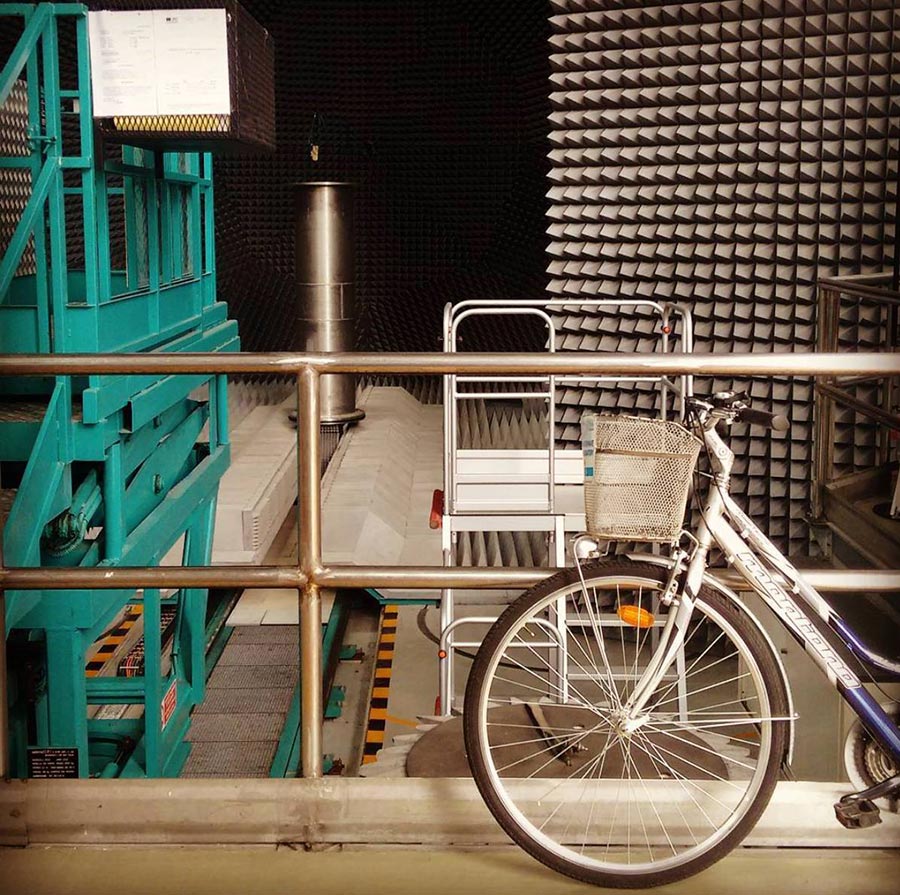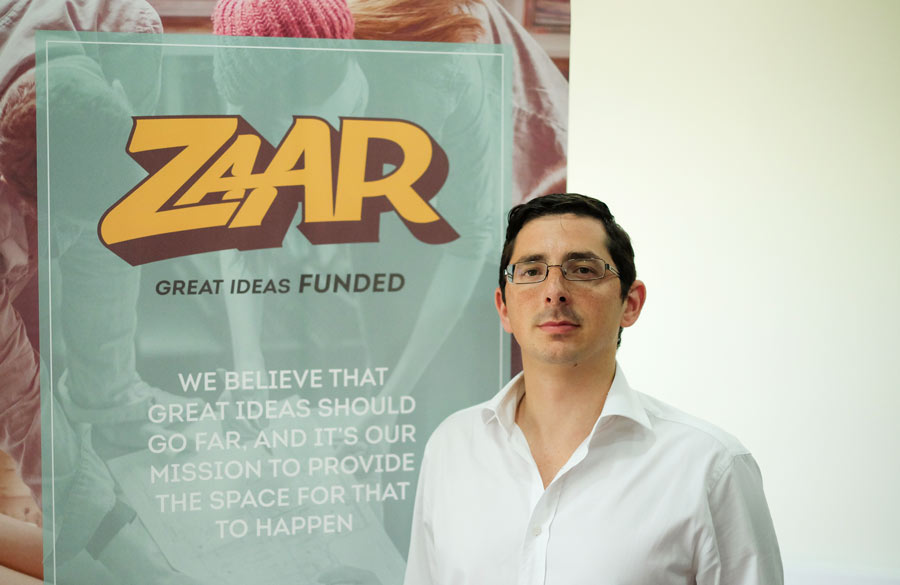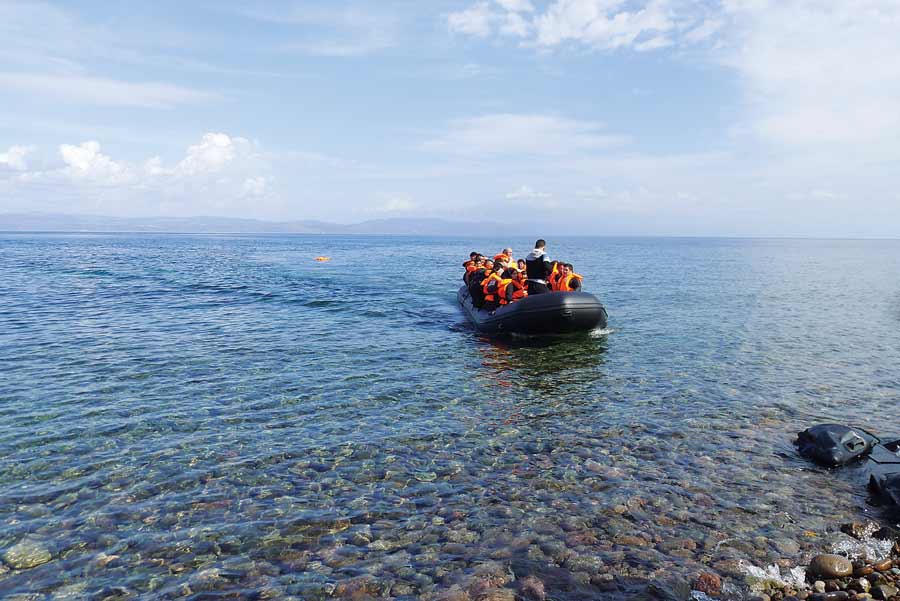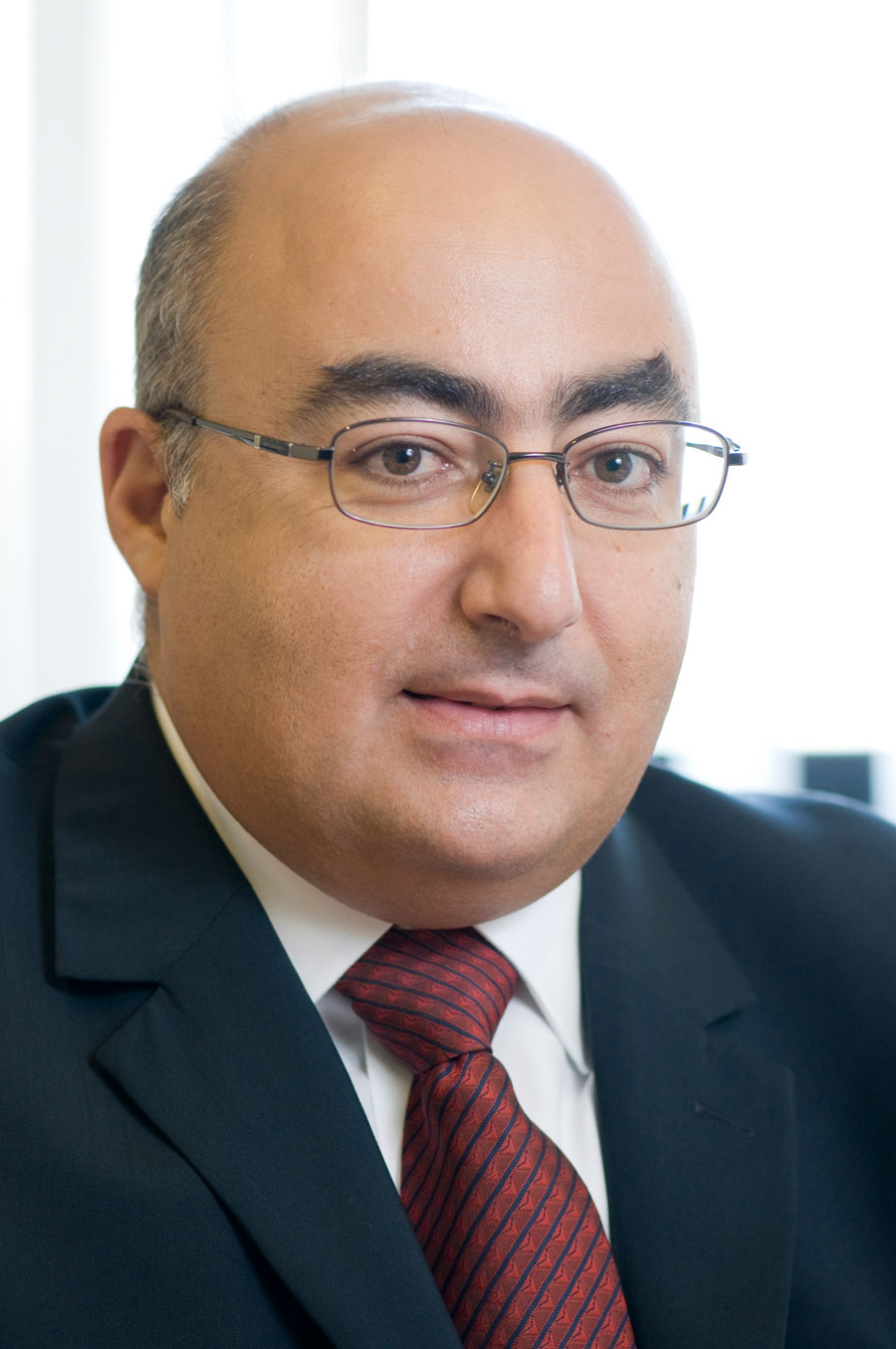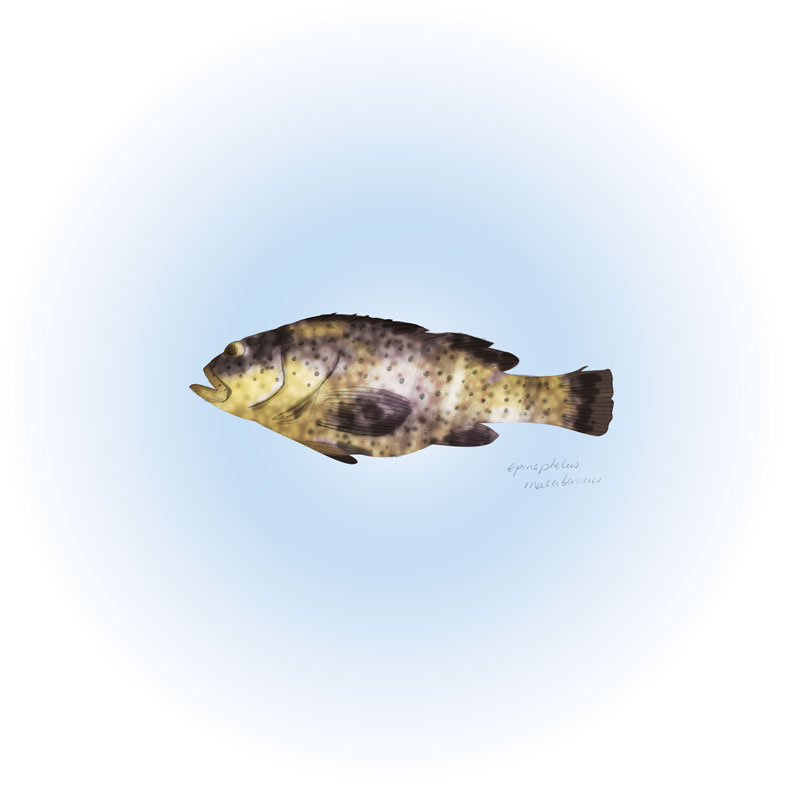Underwater groundwater
Under the sea is a whole new world with its own geology. Dr Aaron Micallef writes about the MARCAN project, shedding light on the freshwater reserves sitting beneath the sea’s saltwater and how they can be used to alleviate the groundwater problem plaguing The Maltese Islands.
Bloomin’ roofs go green
Weather in Malta can be extreme. Summer is scorching. Winter brings storms. Some might blame nature and leave it at that, but there are solutions to these problems. Nigel Borg talks to Antoine Gatt about one of them.
Counting pennies for creativity
Crowdfunding has proven to be a revolutionary business-financing phenomenon. From an A to Z list of every indie game, record or publication imaginable, to rebuilding homes, rehoming puppies and sending people to the Olympics, crowdfunding platforms have shown they can be just the right kind of push to get hatchlings to fly the nest. Having a local crowdfunding platform gives entrepreneurs and communities in Malta a unique edge.
Crowdfunding is a place where local ideas, concepts and projects meet and can receive public support. But, in a world of large crowdfunding opportunities across the globe, what does Malta actually stand to gain by having a platform with a local focus?
Financing options on the Maltese Islands are notoriously limited. Over 70 per cent of small-to-medium enterprises (SMEs) resort to traditional lending services like bank loans and overdrafts. Getting a new business off the ground is a daunting task, and 30% of local entrepreneurs admit to finding difficulty in securing investments.
Enter Zaar, the donation and reward-based crowdfunding platform set up by the Malta Business Bureau and the University of Malta [UoM]. The idea initially was to help bridge gaps in the market when it comes to financing for start-ups, innovation, and research projects. A local crowdfunding platform helps local companies by bypassing the legal and bureaucratic obstacles that come with using international platforms. While projects targeting Maltese recipients benefit from local context and backing, backers need not be based in Malta at all. By giving local creators the space to attract funding in the most efficient way, Zaar aims not only to fuel dreams, but to fulfil them.
That being said, Zaar is not just about financing, and one of the company’s core values is about getting good ideas out in the open. In operation for seven months, the platform has managed to fund everything from album launches to charity events. Some of the most successful offspring to date include: a soon-to-be launched Pet Cabin at Mater Dei; eeMod—a modular and multi-functional platform for makers, engineers, and students; funding for the UoM student racing team to build a new formula style car; and a project to bring graphic novels to Malta’s Public Library. Without a little push from Zaar to get public interest going, none of these projects may have made it.
Local crowdfunding also opens up new avenues for researchers and their projects. Governmental and EU funds are becoming harder to come by, but Zaar ensures that every researcher who has ever been told that their field lacks the appeal for funds, at least has the opportunity to try. For the first time, people have the chance to fund studies that they want to see done, and the thought of that is genuinely exciting.
Crowdfunding is going to be a game changer for innovation, and Zaar has the first pin down on the local map.
From Immigrants to Theology
Over 1.82 million migrants entered the EU in 2015 and this has triggered much dialogue across member states. In May 2015, the Archbishop of Malta, H.G. Mons Charles J. Scicluna, after the Vatican announcement of the Year of Mercy, reached out to the academic community to reflect on the immigrant phenomenon. This call set in motion The Mercy Project, which aims to create a set of reflections and recommendations around immigration.
The project has four stages. It first reflected on the issues of mercy and immigration within the Maltese context. During this stage, staff members from various University of Malta (UoM) faculties explored the local situation, reflecting on the terminology used, prevailing concepts and current practices. This was followed by a second stage. Academics held meetings to discuss various viewpoints and realities around migration. Those involved included members from the Faculties of Theology, Arts, Social Wellbeing, Laws, Education, and Health. At the third stage, a symposium on ‘Mercy and the Immigrant’ was held on 6 June 2016. The symposium brought together interested parties and agency representatives to reflect on the issue. This provided a platform for a dialogue between theologians and society. Rev. Dr René Micallef S.J. (Gregorian University in Rome) spoke about the mercy, justice, and policies needed to be considered by Malta and the rest of the EU.
The final forth step is underway. A publication of the project’s position papers is being prepared. This will make available to various sectors of the public some of the philosophical, social, legal, educational, and theological ideas which surfaced during the project’s dialogues and consultations. It will provide concrete recommendations for the University of Malta, State, and the Church.
Dr Pauline Dimech and Rev. Dr Stefan Attard are the project co-ordinators.
eLeadership—Are we getting it right?
Matthew Gatt, eSkills Malta Foundation
To secure adequate growth and quality jobs, Europe needs eLeaders; people who are capable of driving innovation to capitalise on ICT advances. To identify these opportunities requires good eLeadership skills. Such skills enable people to lead their team towards identifying business models and exploiting key opportunities. This makes the best use of ICT that delivers the objectives of organisations.
A Patchwork Mediterranean: Knitting It Together
The Mediterranean is surrounded by over 20 countries each of which claim ownership over its nearby sea. To try and prevent over fishing and other pressures, many countries have set up protected areas. Jessica Edwards talks to Prof. Patrick J. Schembri who leads the Marine Ecology Research Group (Department of Biology) to find out how all of these areas are being linked to protect the Mediterranean Sea from the threats it faces.
A Greener Malta
The facts are clear: Malta has a challenge. It needs to build up a 10% electricity generation from renewables by 2020. Beyond that, it needs cleaner air, cleverer homes, and a consistent power source for its people and economy. The big question is how can we enjoy Malta’s newly won benefits of the developing world without compromising our environment? This challenge motivates researchers worldwide. Malta is doing its bit in environmental engineering: developing green skies, green energy, green homes, and the opportunity for a green Malta.
Greener Skies
Nearly 100,000 commercial flights take off every day worldwide causing 2% of man-made carbon dioxide (CO2) emissions per year. In Malta, over one million tourists visit each year and flights are critical in connecting an island to the outside world. How can we address Malta’s economic needs with a growing public concern on airplane pollution, noise, and contribution towards climate change? A €1.6 billion Clean Sky project funded by the European Commission is trying to make this apparent conflict work. It brings together major European industrial partners, research establishments, and academia to develop breakthrough technologies for the air transport industry. In Malta, the Department of Electronic Systems Engineering is optimising flight paths known as trajectories.
The idea: reduce a plane’s flight path, reduce the time it is airborne, lower CO2 release. Computer algorithms can find a plane’s best trajectory and minimise air pollutants and noise. Malta is handling a part of the software development to optimise flight paths. The purpose of the software platform being developed by the Maltese team is to allow partners to bring together their optimisation models and tools. This will allow the international consortium to solve the complex algorithms that come with flight trajectory problems.
Another project called Clean Flight is tackling local airplane flight paths. Current flight trajectory calculations are based on lowering costs. This does not necessarily mean that these trajectories provide the least pollution for our skies. Clean Flight’s approach is to lower flight costs by being green. Usually these two qualities match: burn less fuel, spend less, pollute less. Commercial aircrafts should have new flight paths for Malta.
Harnessing the winds
Every time we switch on an appliance at home or at our workplace we are consuming energy. And energy means money and pollution. Pollution can be nullified by using renewables. Denmark, famous for windmills, has invested heavily in wind energy. By 2011 it generated around 26% of the total electricity demand through wind farms. Denmark also has one of the lowest electricity prices in the EU.
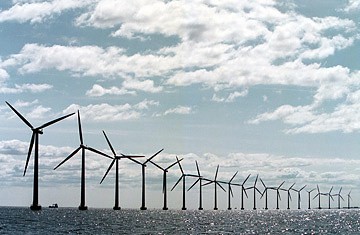
Wind energy’s success has come with a backlash. The rapid increase in land use has caused public outcry on despoiling views, animal activists are worried about bird deaths, and increased pressure on limited land availability. In Malta land is of premium value. Green and open spaces are limited. Out at sea these problems could disappear and floating offshore wind structures may provide accessibility to deeper waters. Deeper seas have other plusses. Out there, the wind speeds are higher and more consistent, which makes electricity generation more realistic. The flipside is the expense in sending the precious electrical energy back to shore to power homes.
Floating wind turbines may be the key to fulfil Malta’s renewable energy targets. Malta has agreed to a 10% electricity generation from renewables by 2020 with the EU. If the country fails to meet its target it will be smacked with a huge fine.To give more opportunities for the government to reach this target the Faculty of Engineering is pushing new research into wind energy. There are major differences between floating and fixed offshore structures. Waves cause ever changing stresses on the turbine’s structure and bobbing movement could change the turbine blades’ aerodynamics that reduces power output.
The researchers at the Faculty’s Fluids Lab are testing a model floating wind turbine. Till now, the experiments have examined the change in power experienced by a wind turbine’s rotors when bobbing up and down on waves. The data has been inputted into a computer model to simulate large-scale floating wind farms. By simulating the air flow the drop in generation can be better understood. The simulations are based on the application of free-wake vortex methods. Since the air flow changes with the oscillation of the platform and therefore with time, these methods are capable of capturing the changes in the wake formed by the rotor.
Large wind farms face the problem of having generators and gearboxes mounted on each turbine at great cost. Instead the energy generation could be centralised, with individual turbines pumping seawater towards a central station which makes use of a positive displacement pump. This concept would mean that a centralised hydroelectric power station could be located on our shores.
Replacing every wind turbine’s gearbox and generator with a hydraulic pump offers many advantages. It reduces expense, by minimising the number of moving parts’ maintenance costs, and make a lighter turbine. Wind farms that pump water could also be easier to combine with wave energy, energy storage systems, and reverse osmosis plants that use up a big chunk of Malta’s electricity to make drinking water from the Mediterranean.
“Floating wind turbines may be the key to fulfill Malta’s renewable energy targets”
The only way is up
Normally we think of wind turbines as a tall central structure with a generator on top and propeller-style blades powering everything. But this is not the only possibility. Blades can spin around the turbines’ central structure doing away with expensive maintenance costs and complex gears to turn the blades into the wind. These Vertical Axis Wind Turbines (VAWTs) do not need to be oriented into a specific wind direction. Their problem is a requirement for higher wind speeds before they start to spin.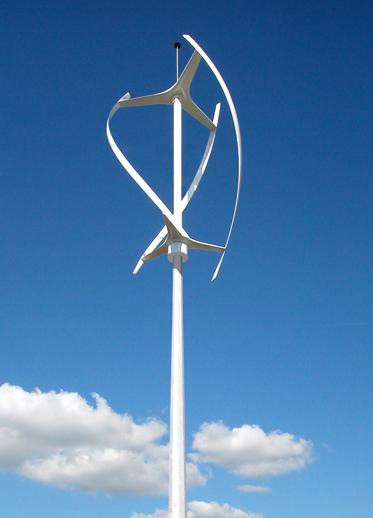
Dr Ing. Pierluigi Mollicone is coordinating a project that is coming up with new design concepts for this type of wind turbine. By working with both local academics and industrial players, a state-of-the-art design has to improve both the starting speed and the capability of controlling the turbine at varying wind speeds. Starting off from a conceptual idea, the design is then detailed and developed in the first step to make a wind turbine. The computer design then needs to be tested for aerodynamics and structural integrity—does it spin well and can it take a beating? The computational model then needs to be translated into a real world structure and tested in a wind tunnel, with further experiments back and forth needed to come up with a new wind turbine.
Malta’s very own windmill: restarted
The Raddiena or Chicago windmill is a well-known sight in rural Malta. These windmills harness the winds to draw water from the water table and irrigate fields. In 2001, 300 windmills were listed across Malta and Gozo. Unfortunately, the introduction of electricity has led farmers to abandon this clean source. Many windmills are gradually deteriorating. Dr Ing. Tonio Sant (Department of Mechanical Engineering) and his team are developing a new wind turbine concept to replace these badly damaged Chicago windmills. Together with the Ministry for Resources and Rural Affairs they are upgrading the rotor design structure’s aerodynamics to improve water-pumping efficiency. At the same time, the researchers want to maintain the original visual appeal of a multi-bladed rotor. The turbine will also produce electricity and be grid-connected. It won’t just pump up water but also provide clean energy.
Green Homes
Malta is covered in houses. Covering their roofs with PV (photovoltaic) panels is a way we could all help by making renewable energy. In the past five years, Malta has seen a drastic increase in PV panel use. Electricity generation is shifting from a centralised power station to our homes. Distributed generation is characterised by small-scale electricity generation, deployed near the point of use: our homes.
Currently our national grid cannot handle large PV installations. The stability of the grid may be compromised leading to power outages. And we all know what being in the dark for a few hours means. No Internet, no TV, no cold drinks in summer. The storage of electric energy can be used to balance the generation and consumption demands for a single household or company. Excess energy generated during periods of high generation can be stored. This stored energy can then be used when supply cannot meet demand, perhaps when using several heaters on a cloudy day.
Microgrids can solve these challenges. These grids are low voltage (electrical distribution within a home) or medium voltage (electrical distribution within a neighborhood) electrical distribution networks designed to supply small electrical loads. They are needed to hook up PV panels to a small community like a housing estate, university, schools, shopping mall, or industrial area. They consist of three major components. The homes equipped with PV or wind turbine installations, systems to store the energy generated, and other electricity users connected to the grid.
Microgrids generate energy near where it will be used. This increases reliability and reduces losses due to long transmission lines. Microgrids can also be used to provide electricity in remote locations unconnected to a main grid. Researchers are developing new methods to reliably operate and control microgrids across an island. They want to implement a low voltage microgrid capable of reliable operation that is connected to the national grid.
Many households have PV panels and solar water heaters. Local researchers are combining the two systems. For a sunny country like Malta, such a system makes perfect sense. One major advantage of a combined system is efficient conversion of concentrated solar energy to heat energy. The homeowner can then flip a switch to either generate electricity or heat water.
A parabolic trough, a curved surface, is used to focus the sun’s rays onto a fluid. The heated fluid can reach temperatures of up to 300°C. Hot enough to power a stirling engine used to generate electricity or pump water.
Greener Seas
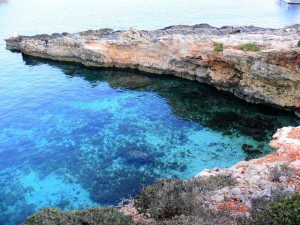
The Mediterranean has over 150 million people living on its coast. A quarter of a million fishermen live off its fish. Even closer to home, the sea around Malta sees one third of the world’s shipping. The only way this sea can survive is by knowing how much we are polluting and exploiting it by monitoring it. Then the effect needs to be evaluated and the situation managed by administrators around the Sea to balance development and environmental health.
A study that will help gather information about maritime traffic across the Straits of Sicily is being carried out by the Department of Mechanical Engineering and the University of Catania. By quantifying the emissions produced, they will find out the consequences of these emissions on the local plant and animal life. The project aims at supporting the monitoring of pollution at sea in the Straits of Sicily and so contributing to future legislation at national and European level.
Engineers designed a towfish that will be used to monitor a number of pollutants in the Mediterranean Sea. A towfish is an underwater platform that is towed behind a surface boat and can reach a depth of 50m. The towfish will be equipped with an HD camera that can take images of zooplankton and phytoplankton in order to study colonies that exist in the Straits of Sicily. Another HD camera will be used to monitor swarms of jellyfish and their location.
A Green Malta
Pollution bothers everyone with dirty atmospheres and smelly odours. Pollution also makes us sick and causes many health problems including birth defects, and burdens health institutes. We all have a role to play to protect and safeguard our environment. Whether it is our skies, seas, or our homes we all have to do our part. A greener Malta means a greener future for all of us.
In 30 years’ time the electric energy we use in our homes and at the workplace will come mainly from renewable energy sources. We will all be driving electric vehicles. The familiar black clouds of smoke from dirty engines will be a thing of the past. But these advances in technology will not be possible without government funding, industrial collaboration, and the sweat of engineers and researchers to find exciting solutions to power nations and our green homes.
Watch more here: https://www.youtube.com/watch?v=VwCNHvD2gqY

